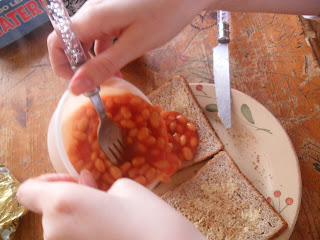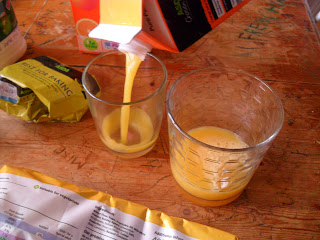Carrie Levin and William Perley say in their cookbook The Good Enough to Eat Breakfast, "Breakfast is all about memories of buttery toast, sizzling bacon, freshly brewed coffee, and the snug warmth of a kitchen on a cold day." I think this sentence can perfectly sum up my representation of breakfast. Indeed, when I read this sentence, I can smell the warm pieces of toast still in the toaster, the bacon in the fried pan. In fact, I have the picture of me going down in the kitchen still asleep smelling the nice smell of coffee still warm in the coffee maker with the voice of my mum saying "morning darling", looking through the window and seeing the cold Winter outside. I absolutely love this picture that is why I love breakfast so much!
But actually, who does not like breakfast? Substantial or not, sweet or not, breakfast is the first meal of the day during which people can eat quite everything. We all have our little ritual every morning. Some of us like having a cup of coffee and read the newspaper or some of us prefer have a glass of orange juice watching TV for example. There are many possibilities on how having a breakfast.
But actually, who does not like breakfast? Substantial or not, sweet or not, breakfast is the first meal of the day during which people can eat quite everything. We all have our little ritual every morning. Some of us like having a cup of coffee and read the newspaper or some of us prefer have a glass of orange juice watching TV for example. There are many possibilities on how having a breakfast.
Moreover, my love for this particular meal comes from the fact that indeed, we can eat everything and most of all sweet things as much as we want as it is the most important meal of the day. Everything begun when I arrived at university and when I had to cook by and for myself. I am like Bilbo, the character of the book, The Hobbit (1937) by Tolkien J.R R. because I have my breakfast in the morning and a second one later during the day. Usually when I am too lazy to cook one evening I just get everything out of my cupboard and put it on the table and I have another breakfast. Then I also like the fact that we can eat quite a lot of things and as I like sweet things, French breakfast is just perfect for me! The other thing interesting is that breakfast is not the same according to countries and to cultures. Breakfast in the United Kingdom for example, was an ordeal for me in the first weeks...
However, one existential question appears for people who like breakfast so much but who also like sleeping in, am I going to have my breakfast or my lunch?? England had the brilliant idea to invent the Brunch! This particular "meal" resolved the problem of my life!
In my blog I will deal with several things such as the difference between French and British breakfasts or the presence of the meal in children's literature and why it is important and in addition to that what people do while having their breakfast?























.jpg)











.jpg)



.jpg)

